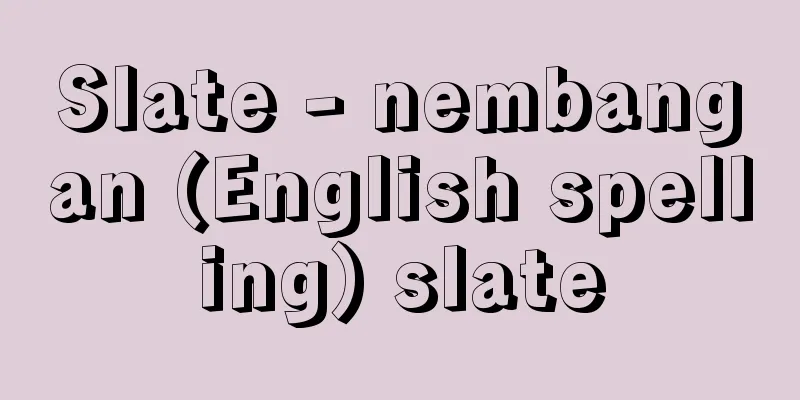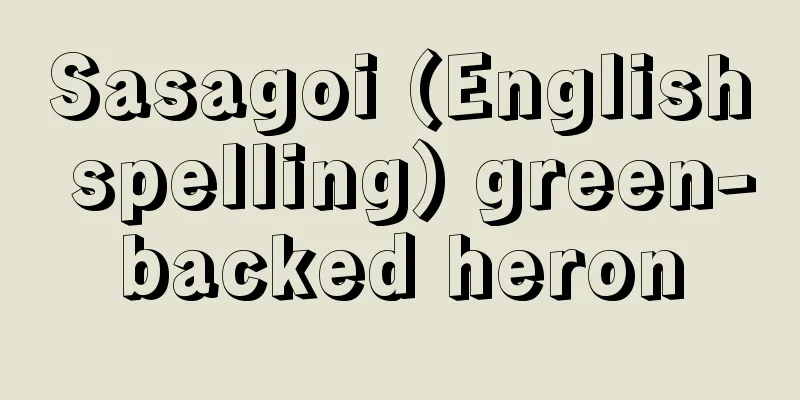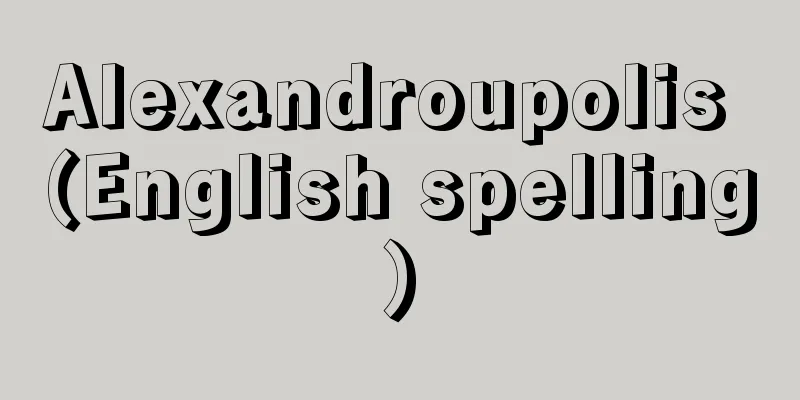Mad writing - Kyobun

|
A type of beautiful prose that was popular among intellectual comedians from the mid-Edo period through the Meiji era. Its origins date back to the Chinese-style mad prose that was popular from the end of the Kyoho era (1716-1736) to the Horeki era (1751-1764). The nascent mad prose can be called "the prose of the madman." A "madman" appears in the Analects of Confucius and refers to a person with a big, enterprising spirit who does not get caught up in trivial matters, and this was especially valued in the tradition of Yangmingism. In Japan in the mid-Edo period, with the popularity of Yangmingism as a backdrop, writers of the time adopted the spirit of the "madman" and "the prose of the madman" became established as a form of prose that directly expressed their inner rage. This kind of frenzied, angry writing often disrupted the correct tone of writing, giving birth to "crazy writing," while the spirit of the "madman" was gradually forgotten, and a trend of enjoying and playing only with the "madness" of writing style took hold; this is where "mad writing" and "fiction" came into being. "Fiction" was merely a hobby for intellectuals, but the existence of "mad writing," which had a tradition of writing by the mad, played a major role in its acceptance in society at the time. The kyoka poets of the Tenmei period (1781-89) were typical embodiments of the spirit of fiction, and eventually "mad writing" came to mean all things "kyoka prose," which incorporated the spirit of kyoka into prosaic writing. Early writers of crazy prose included Masuho Zankou, Shidoken ("Genmukusa" 1748), and Jidoraku Sensei ("Fuzokubunshu" 1744), and this style was perfected by Hiraga Gennai ("Naemarainitsuden" 1768), and then developed into Manzotei and Ōta Nanpo ("Shokusanjin"). [Mitsutoshi Nakano] “Gisaku Kenkyu” by Mitsutoshi Nakano (1981, Chuokoronsha) Source: Shogakukan Encyclopedia Nipponica About Encyclopedia Nipponica Information | Legend |
|
江戸中期から明治にかけて知識人戯作(げさく)者の間に行われた一種の美文。その源は享保(きょうほう)(1716~36)末から宝暦(ほうれき)(1751~64)ごろに流行した漢文体狂文にさかのぼる。発生期狂文はすなわち「狂者の文」といえる。「狂者」とは『論語』に出て細事にかかわらぬ志の大きい進取の精神をもつ者をいい、それが陽明学の伝統のなかでとくに重んじられた。日本では江戸中期、陽明学の流行を背景に、当時の文人たちが「狂者」の精神にのっとり、自己内心の憤激を直接的に表現する文章として「狂者の文」が定着した。こうした狂撃、憤激の文章は往々にして文章の正しい格調を乱して「狂体の文」を生み出していく一方、「狂者」の精神はいつのまにか忘れ去られ、文体の「狂」のみを喜びもてあそぶ風潮が定着したところに「狂文」があり「戯作」の発生の端緒があった。「戯作」は知識人の余技にすぎないが、それが当時の社会に容認されるためには、狂者の文の伝統をもつ「狂文」の存在が大きな役割を果たしている。戯作精神の典型的な具現者が天明(てんめい)期(1781~89)の狂歌人であったところから、やがて「狂文」は狂歌の精神を散文化した「狂歌の文」の意味をそのすべてとするようになった。狂文作者としては、早く増穂残口(ますほざんこう)、志道軒(『元無草』1748)、自堕落先生(『風俗文集』1744)があり、平賀源内(『痿陰隠逸伝(なえまらいんいつでん)』1768)に大成され、万象亭(まんぞうてい)、大田南畝(なんぽ)(蜀山人(しょくさんじん))に展開していったといえよう。 [中野三敏] 『中野三敏著『戯作研究』(1981・中央公論社)』 出典 小学館 日本大百科全書(ニッポニカ)日本大百科全書(ニッポニカ)について 情報 | 凡例 |
<<: Walking race - Kyoho (English spelling) walking race
Recommend
Orinou (English spelling) Zhe-na; Chê-na
A Chinese financial system. Substituting another e...
Paraphilia
...These diverse catalogs of sexual perversions h...
World order - sekai ichitsujo (English spelling) world order
It is a collection of various processes and proced...
Cover net - Cover net
…Net fishing is, of course, a general term for fi...
Legnica (English spelling)
A city in Lower Silesian Voivodeship in southweste...
Cato Minor
…Roman politician. Great-grandson of Cato the Eld...
Ogie-style long song
...There are also works that are strongly influen...
Olomouc - Olomouc (English spelling)
A city in the central Moravia region of the Czech...
cream cheese
… A small amount of cream may be added to improve...
glioma
… On the other hand, glioblastoma multiforme (11....
Flare Star - Flare Star
Also called a flashing star. A type of variable st...
Ogano Tamaro
?-? A Shinto priest in the Nara period. He was th...
Rozhdestvensky
A Russian naval officer. During the Russo-Japanese...
Data communication - data communication
The term refers to the communication of digitaliz...
Consumer Reports
...In 1891, the Consumers' League was formed ...









